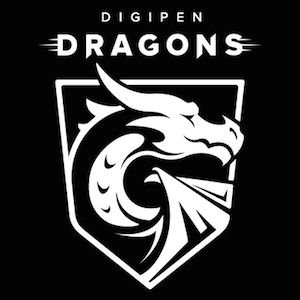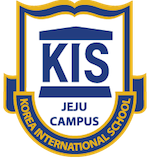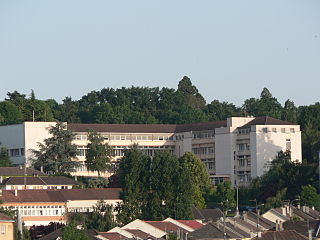Related Research Articles

The Texas Academy of Mathematics and Science (TAMS) is a two-year residential early entrance college program serving approximately 375 high school juniors and seniors at the University of North Texas. Students are admitted from every region of the state through a selective admissions process. TAMS is a member of the National Consortium for Specialized Secondary Schools of Mathematics, Science and Technology.
Educational software is a term used for any computer software that is made for an educational purpose. It encompasses different ranges from language learning software to classroom management software to reference software. The purpose of all this software is to make some part of education more effective and efficient.

The Illinois Mathematics and Science Academy, or IMSA, is a three-year residential public secondary education institution in Aurora, Illinois, United States, with an enrollment of approximately 650 students.

DigiPen Institute of Technology is a private for-profit university in Redmond, Washington. It also has campuses in Singapore and Bilbao, Spain. DigiPen offers bachelor's and master's degree programs. It also offers summer programs for students in grades K-12, online courses, and year-long high school programs.

The Oklahoma School of Science and Mathematics (OSSM) is a two-year, public residential high school located in Oklahoma City, Oklahoma. Established by the Oklahoma state legislature in 1983, the school was designed to educate academically gifted high school juniors and seniors in advanced mathematics and science. OSSM opened doors to its inaugural class in 1990. It is a member of the National Consortium of Secondary STEM Schools (NCSSS).

Cupertino High School, colloquially referred to as "Tino", "CHS", is a four-year comprehensive public high school located near the Rancho Rinconada and Fairgrove neighborhoods of Cupertino, California, USA. The school serves mostly suburban residential and areas in eastern Cupertino, southern Santa Clara, and west San Jose.

Michael E. DeBakey High School for Health Professions is a medical secondary school located in the Medical Center area of Houston, Texas, United States. It is a part of the Houston Independent School District.

The School for the Talented and Gifted at the Yvonne A. Ewell Townview Magnet Center is a public college preparatory magnet secondary school located in the Oak Cliff area of Dallas, Texas. The school enrolls students in grades 9-12 and is a part of the Dallas Independent School District. It is known for its liberal arts, Advanced Placement Program and intensive education style. In 2006, 2007, 2009, and 2010 Newsweek named the school the #1 public high school in the United States. In 2012, 2013, 2014, 2015 and 2016, U.S. News & World Report named TAG the #1 public high school in the United States.
Advanced Placement (AP) Computer Science A is an AP Computer Science course and examination offered by the College Board to high school students as an opportunity to earn college credit for a college-level computer science course. AP Computer Science A is meant to be the equivalent of a first-semester course in computer science. The AP exam currently tests students on their knowledge of Java.
The Science/Engineering Specialized Learning Center, S&E or SnE, is a public high school magnet program housed within Manalapan High School, located in Englishtown, in Monmouth County, New Jersey, United States. The program, started in 1985, is designed for students with an interest in focusing on mathematical and scientific subjects.
In the United States, Advanced Placement (AP) Computer Science is a suite of Advanced Placement courses and examinations covering areas of computer science. They are offered by the College Board to high school students as an opportunity to earn college credit for college-level courses. The suite consists of two current classes and one discontinued class.

The Union County Academy for Information Technology (UC-AIT) is a full-time four-year public high school located in Scotch Plains, in Union County, in the U.S. state of New Jersey, on the Union County Vocational Technical Schools Campus. The school is part of the Union County Vocational Technical Schools (UCVTS), which serves students in all of Union County. AIT focuses on education in computer science and computer engineering with an emphasis on mathematics and science.
The High School for Enterprise, Business, and Technology is a public high school located on the fourth floor of the Grand Street Educational Campus at 850 Grand Street and Bushwick Avenue in the Williamsburg neighborhood of Brooklyn, New York. The school was opened in the fall of 1996 following the closing of Eastern District High School in the spring of that year. The school observes a student dress code. The principal is Holger Carrillo.

Steven Jay Sinofsky is an American businessman and software engineer.

Dearborn Center for Math, Science and Technology (DCMST) is a specialized secondary education center with a four-year advanced, research based, science and math curriculum located in Dearborn Heights, Michigan. The school was founded in 2001, with its first graduating class in 2005. Most of the school is located in the Henry Ford Community College building, but some of the Michael Berry Career Center (MBCC) building is also used by DCMST. About 75 students are selected each year from the three high schools in the Dearborn City School District. Once in the program, students are committed for four years. In freshman and sophomore year, students attend their three classes at DCMST in the afternoon from 11:15 to 1:55. Juniors and seniors attend in the morning from 7:35 to 10:15. The other three hours are spent at student's home school. DCMST is a member of the NCSSSMST, an alliance of specialized high schools in the United States whose focus is advanced preparatory studies in mathematics, science and technology. The school is also accredited by the North Central Association (NCA) as all other Dearborn Public Schools are.

La Consolacion College Bacolod, also referred to by its acronym LCCB or simply LCC, is a private, Catholic, co-educational basic and higher education institution administered by the Augustinian Sisters of Our Lady of Consolation (ASOLC) in Bacolod, Negros Occidental, Philippines.
Educational robotics teaches the design, analysis, application and operation of robots. Robots include articulated robots, mobile robots or autonomous vehicles. Educational robotics can be taught from elementary school to graduate programs. Robotics may also be used to motivate and facilitate the instruction other, often foundational, topics such as computer programming, artificial intelligence or engineering design.

Korea International School, Jeju Campus (KISJ) is South Korea's first international boarding school. The school is a sister campus to Korea International School and an affiliate of YBM, a publishing and English-language education services company. Founded in 2010 and first opened in 2011 as part of the Jeju Global Education City, the school's first senior class of 52 students matriculated in May 2016. KISJ is a proprietary, nonsectarian school offering an internationalized American college preparatory curriculum from Junior Kindergarten through Grade 12, with a boarding program starting in Grade 6. The high school began its AP Capstone™ in 2017–18, one of seven schools to offer it in South Korea.

Code.org is a non-profit organization and educational website founded by Hadi and Ali Partovi aimed at K-12 students that specializes in computer science. The website includes free coding lessons and other resources. The initiative also targets schools in an attempt to encourage them to include more computer science classes in the curriculum. On December 9, 2013, they launched the Hour of Code nationwide to promote computer science during Computer Science Education Week through December 15, 2013.

3iL is the Limoges Computer Sciences Engineering School and one of the 210 French engineering schools authorized to issue an engineering diploma.
References
- 1 2 3 4 Zhang, Flora (2013-05-14). "Molding the next generation of computer scientists". CNN. Archived from the original on 2015-07-05. Retrieved 2015-07-05.
- 1 2 3 4 Bishop, Todd (2012-07-27). "Geek of the Week: Kevin Wang is putting computer scientists into high schools". GeekWire . Archived from the original on 2015-07-05. Retrieved 2015-07-05.
- 1 2 3 4 Pak, Samantha (2011-11-02). "Microsoft employees bring real-world experience into the classroom with TEALS program". Redmond Reporter . Archived from the original on 2015-07-05. Retrieved 2015-07-05.
- 1 2 3 4 Wingfield, Nick (2012-09-30). "Fostering Tech Talent in Schools". The New York Times . Archived from the original on 2017-07-02. Retrieved 2015-07-05.
- 1 2 3 4 Apfel, Rachael (2012-12-18). "Technology Education and Literacy in Schools". Harvard Graduate School of Education. Archived from the original on 2015-07-05. Retrieved 2015-07-05.
- ↑ Benson, Julie (2013-08-26). "TEALS transforms computer science education in Bellevue". Bellevue Reporter . Archived from the original on 2015-07-05. Retrieved 2015-07-05.
- 1 2 3 Jones, Matt (2015-03-18). "Microsoft computer program coming to school". Altavista Journal . Archived from the original on 2015-07-05. Retrieved 2015-07-05.
- ↑ Pak, Samantha (2013-04-30). "Microsoft holds event to encourage students in computer science field". Redmond Reporter . Archived from the original on 2015-07-05. Retrieved 2015-07-05.
- 1 2 3 Badshah, Akhtar (2011-10-03). "Technology Education and Literacy in Schools Program (TEALS) Grows by Leaps and Bounds". The Huffington Post . Archived from the original on 2015-07-05. Retrieved 2015-07-05.
- ↑ Gilmer, Vickie (2013-04-22). "Microsoft employees give tech lessons in area schools". KCPQ. Archived from the original on 2015-07-05. Retrieved 2015-07-05.
- ↑ Chiappetta, Marco (2013-03-12). "Microsoft's TEALS program: Facilitating computer science education, coding at a younger age". Network World . Archived from the original on 2024-04-26. Retrieved 2015-07-05.
- ↑ Whittenberg, Jake (2014-09-10). "Microsoft reaching more students in computer science program". KING-TV. Archived from the original on 2015-07-05. Retrieved 2015-07-05.
- ↑ McCarron, Steve (2015-05-01). "Volunteers needed to help teach computer science students". KOMO-TV. Archived from the original on 2015-07-05. Retrieved 2015-07-05.
- ↑ Nagel, David (2013-09-23). "Microsoft Extends TEALS Program, Adds STEM Curriculum Resources". The Journal. Archived from the original on 2015-07-05. Retrieved 2015-07-05.
- ↑ Carson, Erin (2014-09-29). "10 things to know about the state of tech in education". TechRepublic . Archived from the original on 2015-07-05. Retrieved 2015-07-05.
- ↑ Fryberger II, Tyler (2014-09-18). "TEALS Program gives LRHS students a head start in computer science". Ritzville Journal . Archived from the original on 2015-07-05. Retrieved 2015-07-05.